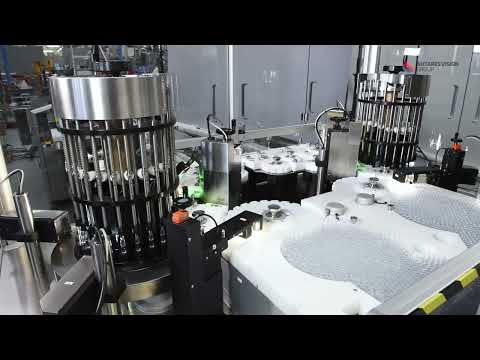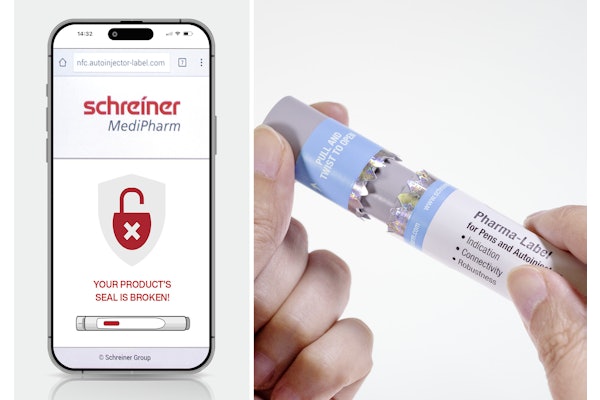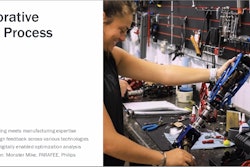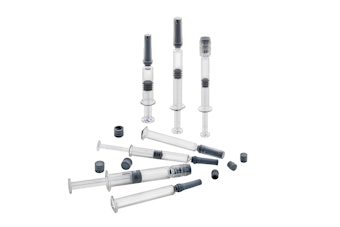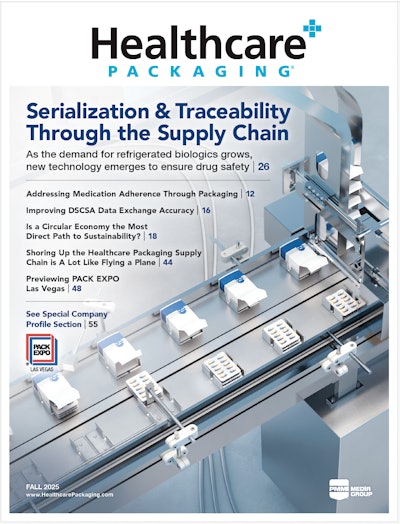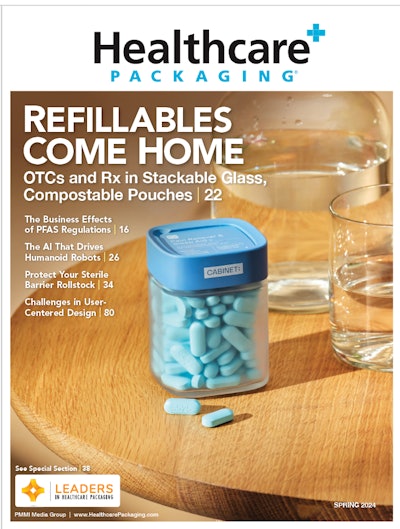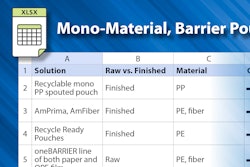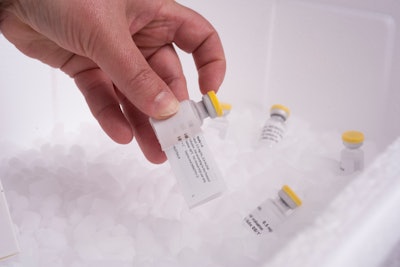
Key takeaways:
- With biologics comprising over 40% of drugs in development, the need for precise temperature control is paramount.
- To accommodate the rise in biologics and GLP-1s PCI has invested heavily in cold chain storage, with more than twenty-five thousand pallet spaces in its network.
- With the Time Out of Refrigeration system, product is scanned each time it is removed and re-enters refrigeration.
In the ever-evolving landscape of pharmaceutical packaging, the rise of refrigerated biologics has presented both challenges and opportunities. As the demand for these temperature-sensitive drugs increases, companies are compelled to adapt their processes to ensure the safety and efficacy of their products, many times adding in the digital tools that are reshaping the industry.
PCI Pharma Services, a leading contract development and manufacturing organization (CDMO), prides itself on being at the forefront of this transformation as Justin Schroeder, Global Vice President, Technical Sales for PCI notes. "As a leading CDMO, we’re kind of the go-to in the industry for launching new medicines and, from a clinical trial perspective, we tend to track with where the market is going in terms of pipeline development."
And where the market is going is the distinct rise in biologics. With biologics comprising over 40% of drugs in development, the need for precise temperature control is paramount. These drugs typically require refrigeration at temperatures between two to eight degrees Celsius (or even lower) and falling outside that range could affect efficacy and patient safety.
For PCI, its refrigerated needs involve various drug delivery forms including vials, syringes, wearables, and auto-injectors. The company continues to invest to be ahead of industry capacity needs: for example, to accommodate the rise in biologics and GLP-1s PCI has invested heavily in cold chain storage, with more than twenty-five thousand pallet spaces in its network. The logistical complexities of managing such a cold chain are immense.
"Logistically in our operations, which are often multi-step operations, we need to monitor each stage of the process as product comes in and out of refrigerators," says Schroeder. This involves tracking the cumulative and incremental time products spend out of refrigeration, ensuring that they remain within safe temperature ranges throughout their lifecycles. The financial stakes are high, as these drugs are not only expensive but, in scenarios like clinical trials, may even be irreplaceable.
To address these challenges, PCI is investing in various digital solutions. One such initiative (which is currently approaching deployment) is the Time Out of Refrigeration (TOR) system from Antares Vision Group, which automates the calculation of time a product is out of cold storage. The TOR system is part of Antares Vision’s Cold Chain Monitoring Solution, a cloud-based platform engineered to actively monitor temperature, product condition, movement, and handling of temperature-sensitive products across the entire supply chain, from manufacturing through storage and distribution.
With the Time Out of Refrigeration system, product is scanned each time it is removed and re-enters refrigeration. The times are tracked cumulatively for a comprehensive look at how long a product, case, or pallet is out of cold storage. Previously done manually, these digital entries are being adopted to remove even a 1% error rate. Ray Hook, Director of Operational Technology for PCI explains, "We're really looking at that TOR to get us to a 99.99% accuracy rate, or better. Our ultimate goal is to be 100% accurate."
The solution ensures product integrity, regulatory compliance, and patient safety by capturing real-time environmental and location data from any IoT-enabled sensor. It also supports product tracking through a variety of technologies, including RFID, barcodes, Bluetooth Low Energy (BLE), and other advanced tracking methods. This system is part of a broader push toward digitalization, which includes the use of electronic batch records and other advanced tracking technologies at PCI facilities.
“Out of the box, the system offers end-to-end capabilities to manage product tracking—from the receipt of raw materials through the distribution of finished goods. It features real-time alerting for time-based excursions or handling issues, as well as the ability to integrate temperature sensors into the process, helping teams respond proactively to potential risks,” says John DiPalo, Chief Strategy Officer for ACSIS, part of Antares Vision Group. “The platform also supports regulatory compliance by maintaining complete audit trails and ensuring data integrity. It is currently being configured to support all PCI packaging locations globally, enabling a standardized and consistent process for managing cold chain products across the entire organization.”
As in anything, the shift toward digital tools like these is not without its hurdles. As Schroeder points out, "In life sciences, and particularly in pharmaceuticals and devices, there is so much regulatory entanglement." Despite these challenges, the benefits of digitalization are clear: it enhances patient safety, reduces waste, and improves efficiency. Schroeder emphasized that PCI’s goal with these initiatives were clear, "We're always focused on patient safety...managing risk and continuously raising our standards," he notes.
Serialization and the DSCSA
Adopting technologies for cold chain manufacturing is in addition to PCI’s ongoing initiatives in serialization and traceability. PCI's serialization system (also from Antares Vision), has been in place for over a decade, ensuring that each product is uniquely identifiable, from the bottle or carton level up to the case, then pallet. Hook says this traceability has proven invaluable in investigations and quality control, allowing for precise identification of issues and minimizing product waste. “It’s been eye-opening to see how valuable that is. When there is a complaint, it helps us figure out exactly what happened on the line,” says Hook.
Schroeder says that PCI started aggregating its pallets, cases, and units to keep that tight control well before the company was required to do so. “We were well out in front of this requirement because of the benefits it provides to us and our clients,” says Schroeder.
 As the industry continues to evolve, the integration of digital tools like the Time Out of Refrigeration (TOR) system will help CDMOs and pharmaceutical companies digitally keep track of these sensitive biologics when they are removed from refrigeration.PCI Pharma Services
As the industry continues to evolve, the integration of digital tools like the Time Out of Refrigeration (TOR) system will help CDMOs and pharmaceutical companies digitally keep track of these sensitive biologics when they are removed from refrigeration.PCI Pharma Services
Looking ahead, PCI is expanding its capacity to meet the growing demand for drug-device combination products, as well as biologics that require refrigeration. With new facilities in Rockford, Illinois, as well as in Ireland set to open in 2026, the company is poised to lead in the assembly of syringes, auto-injectors, and pen assemblies.
"We still do a lot of work in traditional solid oral doses, powders, blisters and bottles… but we see outsized activity growth in the self-injection space, particularly drug-device combination products such as prefilled syringes and those with needle safety devices, assembly of autoinjectors, pens and even on-body wearable devices,” says Schroeder. “This is a very significant investment for PCI, allowing us to stay ahead of market demands."
As the industry continues to evolve, the integration of digital tools like the Time Out of Refrigeration system will help CDMOs and pharmaceutical companies digitally keep track of these sensitive biologics when they are removed from refrigeration. And reliance upon other tools that allow these companies to serialize and aggregate their products for accurate data and enhanced product safety will likely rise, as will tools like AI and data analytics that help companies make sense of the data these new technologies provide.
“We’re at an exciting frontier of digital applications, whether it's AI or other tools that help capture and analyze manufacturing and supply chain data to allow more informed decisions about downtime, scrap or other important aspects along the pharma value chain. Right now, there are ample transformative digital tools coming into play that I think are going to really galvanize this industry, including several from our colleagues at Antares Vision Group,” says Schroeder.
